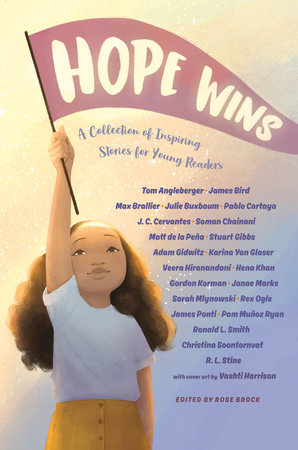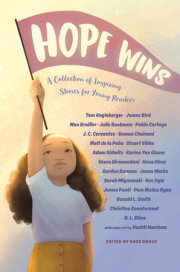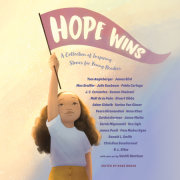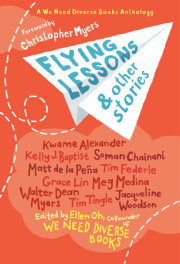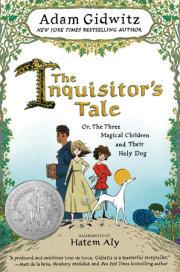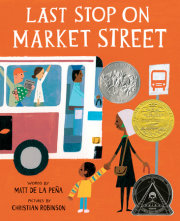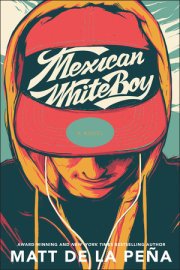introduction
Dear Reader,
In 2018, I published a book called Hope Nation, sort of an older sibling of the book you are reading, because I wanted to share stories of hope with the teens in my life who were struggling. Since then, I’ve been lucky enough to visit with young people who have read stories from that collection, and I have gotten to hear about how those stories have helped them through hard times and made them feel a little less alone.
In 2020, the world as we had known it changed. COVID-19 changed the landscape of how we live, look, go to school, and interact with others. The daily reminder of how our own lives can be turned upside down made me realize why it’s so important to hang on to hope. It’s not always an easy thing to do—sometimes, it feels downright impossible—but the thing I know is that difficult times in life come and go; with those experiences, we grow as people. The key is to find ways to motivate and inspire our spirits—stories of hope can do that.
In this collection, I’ve asked some of my very favorite writers and friends to share a true story from their own personal lives. I hope hearing them share their own stories of challenges they’ve faced in life will help you find your own voice. Each of us has a story that’s worth sharing and celebrating.
It’s also worth noting that, like choosing hope, we can choose to do good, and for that reason,Hope Wins is a charitable endeavor. My contributors committed to creating this book with me as a means to support the North Texas Teen Book Festival (NTTBF), an annual book festival that serves thousands of young readers each year. For their willingness to dig into their memory chests and share with everyone, I thank them all and am forever grateful.
For me, making a decision to choose hope is grounded in the love and support I receive from my family and friends, especially my daughters, Madeleine and Olivia, and my husband, Michael. Thanks to each of you for joining me on this journey. It’s not always an easy path, but it’s one worth taking. Remember that no matter what happens, hope wins.
Dr. Rose Brock
Grapevine, Texas
2022
Everything I Need to Know I Learned in a Thai Restaurant
by Christina Soontornvat
This is not a knock to any of my teachers, but the most important things I’ve learned weren’t taught to me in a classroom. They were taught to me in a restaurant dining room (and the kitchen and the cashier’s station).
When I was three years old, my parents opened a restaurant in the small town of Weatherford, Texas—the first Asian restaurant in the whole county. My dad, an immigrant from Thailand, saw it as an incredible business opportunity. He was right: loyal customers kept our little family restaurant open for nearly forty years.
When I was a kid, I never gave much thought to what it meant to grow up in that environment—it was just my everyday life. If you had asked me then what the best part of spending so much time at the restaurant was, I would have said it was the endless flow of fountain drinks and free spring rolls.
But now I realize that I learned some big, important lessons about people and about life. And now—like a crispy, hot spring roll passed from fryer to plate—I pass these lessons on to you.
•••
THE WAY TO A PERSON’S HEART IS THROUGH THEIR TUMMY
Our busiest shift of the week was Sunday lunch. Almost the whole town of Weatherford went to church on Sunday mornings, and then they would show up at our door as soon as the services were over. We’d often have a line that stretched out onto the sidewalk!
Most of the people who lived in our town attended Christian churches. And then they came to eat food prepared for them by people who were mostly Buddhists. When we first opened, we called ourselves a “Chinese restaurant” because at that time (in 1983), people there weren’t familiar with Thai food. Over the years, we gradually introduced more and more Thai cuisine to the menu. And we also introduced more and more people to Thailand and our culture. Some of our customers even took trips to visit Thailand. Sometimes they met up with our family who lived over there! So many connections were made between Thailand and Texas: two places that are on opposite sides of the globe from each other. And it all started with food.
Food is simple and primal. It is unifying. I wish people in this world had more chances to share food with each other. How can you be angry when you’re chowing down on a dish of garlic chicken? How can you judge someone when you’re sharing a plate of dumplings with them?
I’m not going to say something silly, like the solution to world peace is to have political leaders take their meetings at family restaurants. But maybe it wouldn’t hurt? Maybe they would pass better laws if they also passed each other the shrimp fried rice? And maybe they would also realize that everyone, everywhere deserves to eat good, wholesome food in a safe place. Maybe they would realize that it’s not so hard to take care of each other.
Food is love. Food is peace.
And if you don’t believe me, let’s eat some mango and sticky rice together. You’ll come around.
GIVE THE DUCKS THEIR DUE
Mmm, duck. Tender, with a crispy skin, and drizzled in a sweet, spicy sauce . . .
Sorry. Where was I?
There is a well-known metaphor that says a good restaurant is like a swimming duck: on the surface everything looks calm and smooth, but underneath, the duck is furiously paddling its little feet to keep moving across the water. This was a pretty accurate description of our restaurant. When customers came in, we wanted them to feel like they could leave their troubles at the door and let us take care of them. Their table would be clean when they sat down. The food would be hot and tasty. Their iced tea glass would be refilled before they could even ask.
Serenity. Air-conditioning. Smooth instrumental pop hits playing on the stereo.
Back in the kitchen, it was a whole other story: crowded, hot, and noisy!
Cooks slinging sizzling food in the woks, rice cookers filling the room with jasmine-scented steam, waiters shouting that they needed that order of pad ka-prao five minutes ago!
“Two century noodles, one with chicken! One with no bean sprouts!”
“Where’s table nine’s appetizers?”
Staff in the back stuffing wontons, crates of dirty dishes being washed, and the clean ones being carted back out to the dining room. Go, go, go!
Seeing what happened behind the scenes was one thing I loved most about growing up in the restaurant. It was like knowing a secret no one else did.
And it showed me that there are so many things in life we take for granted when they go smoothly: our schools, our homes, the businesses we frequent. But there is no one who works harder than the people whose work we take for granted. I try to give those people grace and gratitude because I know that underneath it all, their feet are probably paddling like heck.
KEEP CALM AND RESTAURANT ON
As a little girl, my one restaurant dream was to work the cash register. Our cash register was gray, as big as a microwave, and had these brightly colored buttons that made the most satisfyingclack when you pressed them.
When I turned twelve, my parents decided that I had finally earned the right to ring up customers. On the big day, I proudly pulled up a stool, put on a big smile, and uttered my first “How was the meal, folks?” as I punched the buttons:clackety, clack, clack.
One woman came up to pay with a credit card. No problem, I had been trained on this procedure. But as I was ringing in her amount, I must have gotten a little too carried away with the clacking, because instead of charging her $50, I charged her$5,000.
Sweat beaded at my temples, and I imagined this woman screaming at me and making a scene. I didn’t really understand financial matters, so I thought thatI would have to pay for that $4,950 mistake out of my own allowance!
I smiled at her and said, “Will you excuse me one moment, ma’am? I just need to get an extra roll of receipt paper from the back.”
Be a duck, be a duck, be a duck, I thought as I hurried to the kitchen and told my mom what I did. She came out and was able to miraculously issue the woman a refund without much fuss. I thought my mom would be so mad at me and revoke my cash register privileges. Instead, she was proud that I hadn’t freaked out but had solved the problem quickly and calmly. I felt proud, too. That day, I had earned my duck feet.
YOU CAN’T JUDGE A HUMAN BY THEIR HANDBAG
In the service industry, sometimes you hear people say, “The customer is always right,” but actually, sometimes the customer is extremely in the wrong.
One afternoon, my mom was ringing up customers as they paid their bills.Clackety, clack, clack.
Mom greeted the next customer in line: an elegantly dressed middle-aged woman. The woman set her large designer handbag on the counter to free her perfectly manicured hands so she could sign her check. She accidentally bumped her handbag with her elbow, and it tipped over, spilling out multiple sets of our cutlery: knives, spoons, and forks (no chopsticks).
Mom stood there, blinking, trying to figure out a polite way to say,Um, excuse me, ma’am, but are you STEALING OUR SILVERWARE in your four-hundred-dollar purse?
The woman blinked back at her a couple of times, finished paying for lunch, gathered up her bag, and left without a word. She left the silverware, but she did not leave a tip. Which brings me to a related lesson:
YOU CAN’T JUDGE A BRO BY THEIR BOOTS
We had this one longtime customer: a great big man who owned a small ranch where he raised horses. He always wore scuffed-up cowboy boots, and he always took his cowboy hat off when he came in to eat. He was a quiet man, a country man, and a real polite person. He was one of our favorites.
Well, one day we heard some wild news: that guy had won the lottery! No kidding, overnight he had gone from humble ranchman to multimillionaire. I wondered how he would be spending his money. A big, fancy mansion? Or a fast sports car? Would he still come in to eat, or would he be served caviar by his butler from now on?
The next weekend, he wore the same scuffed-up cowboy boots, the same cowboy hat. He ordered the exact same thing and sat at the same table. He was still the same quiet, polite person. The only difference was that when he was finished with his meal, he left a hundred-dollar bill on the table as a tip.
I figured that this guy probably knew what it felt like to be a duck and how much work it takes. He could have spent his money on anything in the world, but he chose to use it to show gratitude for people’s hard work. I always thought that was real classy.
WHEN THEY GO LOW, WE GO, “HI, WOULD YOU LIKE A TABLE OR BOOTH?”
For the most part, the people who came to eat with us were class acts, and the restaurant was a place of mutual respect and kindness. But not everyone in our town was so kind.
Growing up as one of the only Asian American kids in my school wasn’t easy. Even though I made some of my best memories and strongest friendships in Weatherford, I also dealt with racism and xenophobia. I got told to go back to China numerous times, was called a “China doll,” and was told that “my people” eat dogs.
Sometimes kids would pull the corners of their eyes at me and shout, “Ching chong, bing bong!” Racism is so hurtful and cruel, and it also sounds so, so stupid. Really?Ching chong, bing bong? Yeah, you are really proving your superiority with that one, folks.
Anyway, there was a boy who was one year older than me in school, and he was the worst. He would say these stupid, awful things on a consistent basis. But the boy’s family were regular customers at our restaurant. They were kind of quiet, not overly warm and friendly but not rude, either. (That kid definitely never let a racist word slip out while he was scarfing down our scrumptious chicken satay.)
My dad and I never spoke about racism when I was young. I worried he wouldn’t understand or that it would make him feel bad for moving our family to a town where we were outsiders. But one day I finally decided to tell my dad about this boy. I told him all the mean things the boy said and that surely he was learning this stuff from his parents.
My dad nodded. “Yeah, honey, I know. I believe you.”
It was this moment of mutual understanding, where I knew we were on the same page.
So I was hoping that this kid was going to get his comeuppance in some way. I didn’t think my dad was going to cause a scene and throw the family out, but couldn’t he at least tell the cooks to hide some chiles in his pad thai? Serve him the brown crusty rice scraped from the bottom of the pot?
Instead, the next time that boy’s family came in to eat, my dad was just as polite as ever. As far as I could tell, they were served their meal with the same good service as always. I watched them clean their plates, pay, and leave with satisfied sighs.
For a girl who had imagined her archnemesis sprinting for the bathroom with his mouth and intestines on fire from an epic Thai chile–burn, it was pretty disappointing.
It wasn’t until later that I realized my dad knew what he was doing. By giving that family quality service and delicious food, he was elevating himself above their ugliness. Now, don’t get me wrong, if they had been violent or disruptive, they would have been kicked out. Otherwise, he was going to give them a meal they would be talking about for weeks.
My dad was an immigrant, born poor, who raised himself from a factory job to open a restaurant that people drove a hundred miles to eat at. There was pride in what he could do. There was dignity in being excellent when others expected him to fail.
The harsh truth is that plenty of terrible people never get their comeuppance or see the error of their ways. But they can’t take away our dignity. They can’t deny our excellence. And we belong here just as much as anyone else.
And if they can’t handle that, then no satay for them. Their loss.
WE ARE ALL INFLUENCERS
There is this term in social media right now: influencer. By the time this book goes to print, it will probably have changed, and those people will be calledstatusticians or beezers or oozebers or something. But the concept will be the same: they are the people with millions of followers who are so popular and influential that they can set global trends.
I didn’t realize it until recently, but our restaurant was full of influencers. One of the biggest influencers of all was our manager and headwaiter, my uncle Donis. Donis didn’t have any social media accounts. He didn’t own anything fashionable. He didn’t jet to glamorous places. In fact, he rarely ever left Weatherford because he usually had to work.
When my uncle passed away this year after battling cancer, we received stacks and stacks of letters from customers and hundreds more heartwarming messages sent via the restaurant. Many of them said similar things:
“Donis always made us feel so welcome.”
“He remembered our favorite dishes and had them ready for us.”
“He treated us like we were family.”
As I read through these messages, it hit me how much a small act of kindness can mean to someone. Too many people in this world feel forgotten or unimportant. Too many people don’t feel like they deserve to be loved. Taking the time to learn someone’s name or what they like to eat, or just greeting them warmly and looking them in the eye—you never know when that is going to make a real difference in someone’s day. Talk about a superpower.
I wish my uncle had known how powerful he was, how much of an influence he had on all these people. Maybe he did know, and maybe he was trying to teach everyone that they have this superpower, too.
We are all influencers. We all have the power to be good to the people in our everyday lives—the people who matter the most. Out of all the lessons I learned in the restaurant, that one is my favorite.
That, and how to pick out the right dipping sauce for grilled chicken.
Now, who’s hungry?
Christina Soontornvat is the award-winning author of over a dozen books for children of all ages, including the beloved Diary of an Ice Princess chapter book series. Her recent works include the middle grade fantasy A Wish in the Dark, which was named a 2021 Newbery Honor Book and was chosen as Best Book of the Year byThe Washington Post and School Library Journal, and All Thirteen: The Incredible Cave Rescue of the Thai Boys’ Soccer Team, which has received numerous nonfiction awards and was also named a 2021 Newbery Honor Book. Christina lives in Austin, Texas, with her husband, two young daughters, and two old cats.
Copyright © 2022 by Rose Brock. All rights reserved. No part of this excerpt may be reproduced or reprinted without permission in writing from the publisher.


